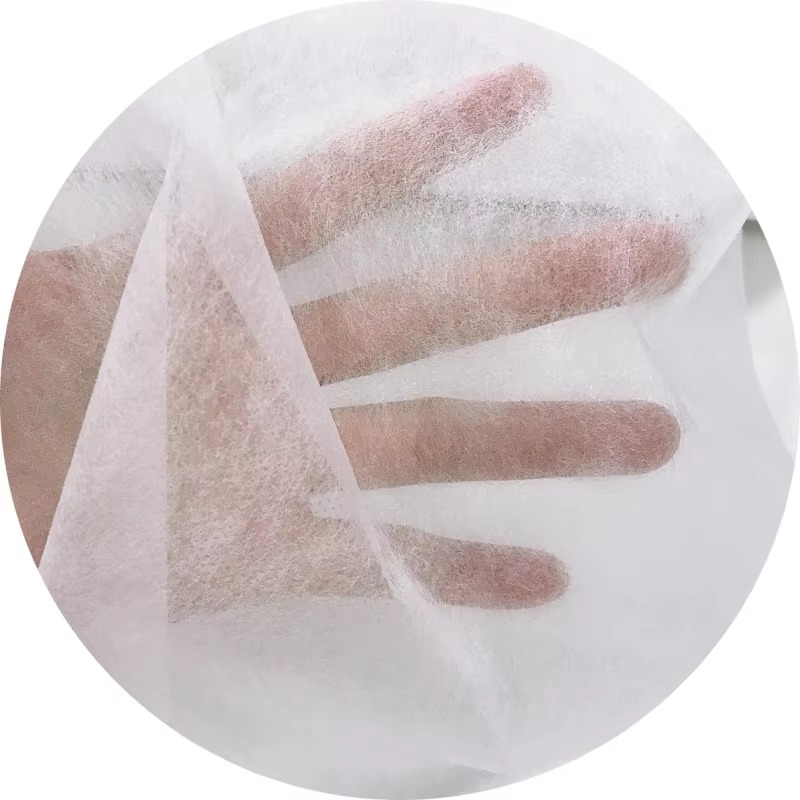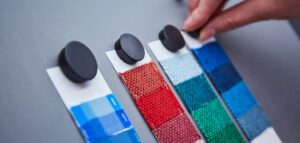Inside the Production of Semi-Cross Spunlace Nonwoven – From Fiber to Finished Fabric
The growth of the global nonwoven industry has been driven by the rising demand for fabrics that are strong, absorbent, eco-friendly, and versatile. Among these, semi-cross spunlace nonwoven has emerged as a reliable material for medical, hygiene, beauty, household, and industrial applications. But what makes this fabric so unique is not just its performance—it is also the precision and innovation behind its production process.
This article provides a deep dive into how semi-cross spunlace nonwoven is made, from raw fibers to finished fabric, highlighting the role of advanced technology, automation, and sustainability practices in shaping its competitiveness.
Step-by-Step Production Process
1. Fiber Preparation and Web Formation
The process begins with selecting suitable fibers, often blends of viscose, polyester, cotton, or wood pulp. These fibers are carded and layered into a uniform fiber web. Unlike parallel-laid or fully cross-laid webs, semi-cross webs are partially oriented in both directions, offering balanced strength and softness.
2. Pre-Spunlace Treatment
Before hydroentanglement, the fiber web undergoes pre-wetting. This reduces fiber fly and prepares the structure for effective entanglement. Pre-treatment ensures that the fabric maintains uniform density and surface smoothness during processing.
3. Hydroentanglement (Spunlace Process)
At the heart of production lies the hydroentanglement technology, where high-pressure water jets are directed onto the fiber web. These jets entangle the fibers mechanically, forming a cohesive fabric without adhesives or binders.
Key Benefits: No chemical bonding, superior softness, and eco-friendliness.
Semi-Cross Structure Impact: Achieves tensile balance in machine and cross directions while retaining flexibility.
4. Reinforcement and Embossing
The semi-cross spunlace web can be further reinforced through embossing, which improves friction, absorption, and aesthetics. Embossed textures increase surface area, making the material more efficient for cleaning and wiping applications.
5. Drying and Finishing
After hydroentanglement, the fabric is dried using hot-air or cylinder drying systems. This step stabilizes the structure, locks in absorbency, and improves durability. Optional finishing treatments may be applied for antibacterial, hydrophobic, or flame-retardant properties depending on end-use requirements.
6. Cutting and Quality Inspection
The dried fabric is slit and rolled into finished products. Each roll undergoes inspection for weight, thickness, tensile strength, absorbency, and appearance, ensuring compliance with industry standards.
Technology Innovations in Semi-Cross Spunlace Production
Automation and Smart Manufacturing
Modern production lines are equipped with automation systems that regulate water jet pressure, fiber alignment, and web uniformity. Intelligent sensors detect inconsistencies in real time, reducing waste and improving quality.
Industry 4.0 practices, including AI and digital twin technology, are increasingly being integrated, enabling manufacturers to simulate processes, optimize resource use, and enhance production efficiency.
Advanced Machinery
The development of high-speed spunlace lines has significantly boosted output while maintaining quality. Innovations such as multi-jet manifolds and energy-efficient pumps allow for precise entanglement while lowering water and power consumption.
Surface Treatment Technologies
Plasma treatment and nanotechnology are being explored to further enhance fabric performance. Plasma modification, for instance, improves surface energy, wettability, and bonding, making the fabric more durable without chemical coatings.
Sustainability in Production
Reduced Water and Energy Consumption
Traditional spunlace processes are water-intensive. However, new closed-loop water recycling systems minimize waste while reducing environmental impact. Energy-efficient drying technologies further lower the carbon footprint.
Eco-Friendly Fiber Blends
Manufacturers increasingly use biodegradable fibers like bamboo, cotton, and viscose, reducing reliance on petroleum-based fibers. Some lines even integrate recycled polyester, supporting circular economy goals.
Waste Management and Recycling
Byproducts such as fiber dust and edge trims are collected and recycled into new webs or secondary products, reducing production waste.
Certifications and Standards
To ensure global competitiveness, semi-cross spunlace nonwovens are often produced in compliance with ISO, OEKO-TEX®, and FDA standards, signaling commitment to safety, quality, and environmental responsibility.
How Optimized Processes Enhance Competitiveness
Cost Efficiency – Advanced water recycling and automation lower operational costs.
Product Quality – Uniformity and strength are improved with AI-driven monitoring.
Market Differentiation – Eco-friendly credentials help brands meet regulatory and consumer expectations.
Scalability – High-speed lines and modular production enable rapid adaptation to demand surges, particularly in hygiene and medical markets.
Applications Driven by Advanced Production
Because of its optimized production process, semi-cross spunlace nonwoven is widely applied in:
Hygiene: Baby wipes, feminine care, adult incontinence products.
Medical: Face masks, surgical gowns, wound dressings.
Household & Industrial Cleaning: Lint-free wipes, automotive maintenance cloths.
Packaging: Breathable eco-friendly bags and protective wrapping.
Technical Uses: Acoustic insulation, filtration, and geotextiles.
Conclusion
The production of semi-cross spunlace nonwoven fabric is a sophisticated process that combines fiber science, water jet technology, and sustainability practices. From carefully engineered semi-cross web orientation to intelligent manufacturing and eco-friendly initiatives, every stage contributes to a fabric that is both high-performing and environmentally responsible.
As the demand for safe, versatile, and sustainable textiles continues to grow, innovations in production technology will ensure that semi-cross spunlace nonwoven remains at the forefront of the nonwoven industry. Manufacturers that embrace automation, efficiency, and eco-conscious practices will be best positioned to meet global market needs.





